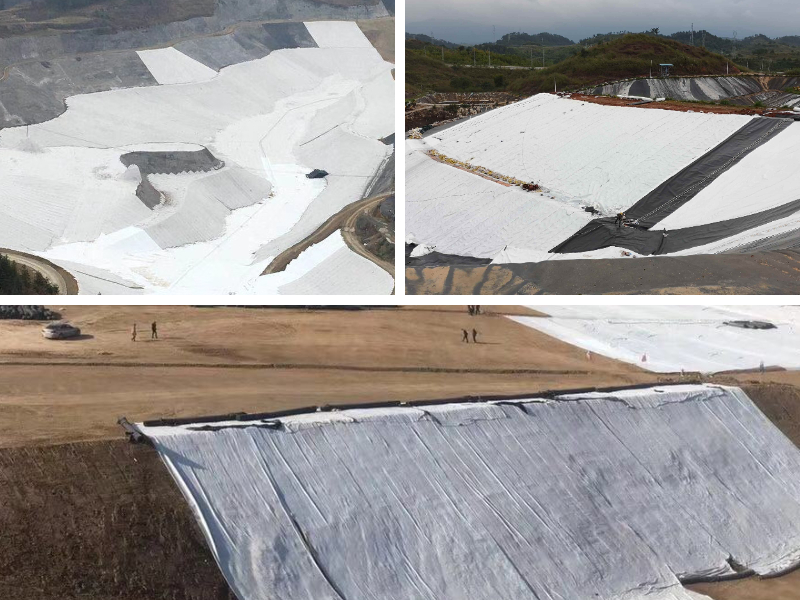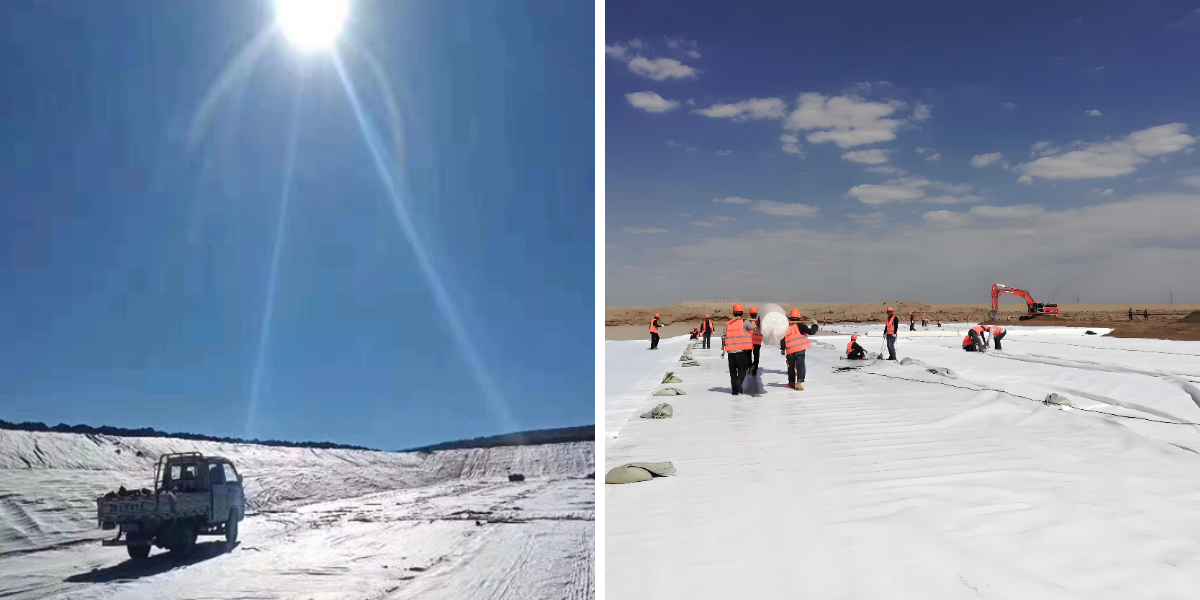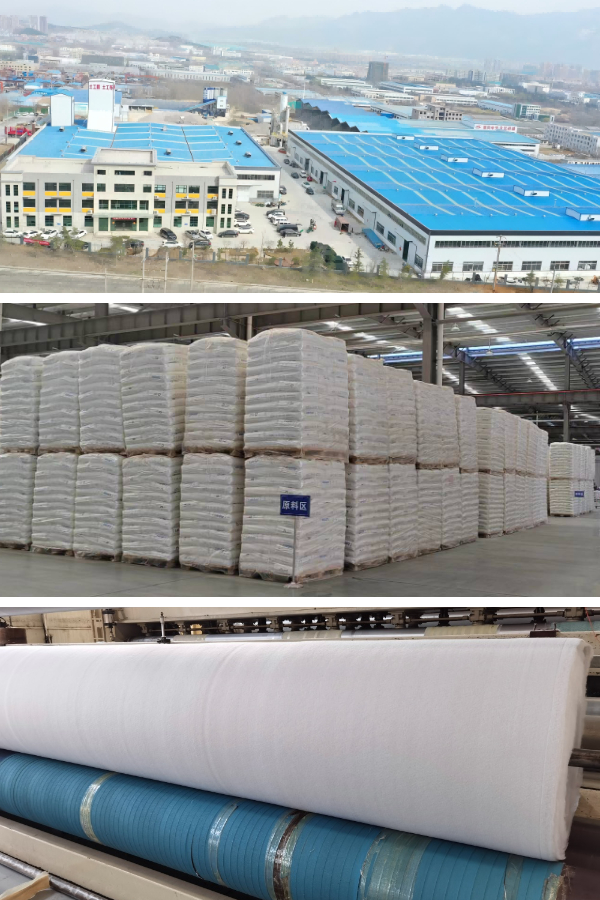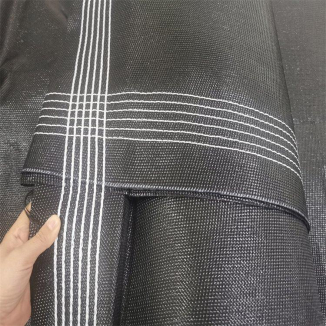Geotextile Cloth for Erosion Control: Best Practices and Case Studies
Erosion manipulate stands as a vital venture in construction, landscaping, and environmental conservation projects. Unchecked soil erosion can injury infrastructure, degrade ecosystems, and lead to expensive repairs. Geotextile fabric has emerged as a reliable, good value answer to fight erosion, imparting versatility throughout various applications. This article delves into the fantastic practices for the use of geotextile fabric in erosion control, highlights real-world case studies, and emphasizes key purposes like geotextile material at the back of maintaining wall, geotextile slope stabilization, and geotextiles soil erosion control.
Why Geotextile Cloth Is Essential for Erosion Control
Before exploring fine practices, it’s critical to recognize why geotextile material outperforms ordinary erosion manipulate methods. Unlike straw blankets or plastic sheeting, geotextile cloth—made from artificial fibers like polypropylene or polyester—balances permeability and strength. It approves water to drain whilst trapping soil particles, stopping sediment runoff. This twin feature makes it best for geotextiles soil erosion manipulate in areas susceptible to heavy rainfall or water flow.
Additionally, geotextile material is durable, resistant to UV radiation, and unaffected with the aid of chemicals, making sure long-term performance. For example, when used as geotextile cloth at the back of preserving wall, it acts as a barrier between the wall and backfill soil, stopping satisfactory particles from clogging drainage structures and decreasing strain on the wall structure. In geotextile slope stabilization, its tensile energy helps anchor soil on steep gradients, minimizing the threat of landslides.
Best Practices for Geotextile Cloth Installation in Erosion Control
Proper set up is key to maximizing the effectiveness of geotextile cloth. Below are actionable fantastic practices tailor-made to frequent erosion manage scenarios:
1. Site Preparation: Assess Soil and Slope Conditions
Before laying geotextile cloth, behavior a thorough web site assessment. For geotextiles soil erosion control, check soil kind (sandy, clay, or loamy) to pick out the proper cloth weight and permeability. Sandy soils require greater permeability to keep away from waterlogging, whilst clay soils want fabric that forestall great particle migration.
For geotextile slope stabilization, measure slope steepness. Slopes steeper than 3:1 (horizontal to vertical) demand heavier, high-tensile geotextiles to face up to higher soil pressure. Clear the web site of debris, rocks, and sharp objects to forestall material punctures—this step is specifically indispensable for geotextile material in the back of conserving wall, the place a broken material should lead to wall failure.
2. Fabric Selection: Match Type to Application
Geotextile fabric comes in three most important types: non-woven, woven, and knitted. Choose primarily based on your project’s needs:
Non-woven: Ideal for geotextiles soil erosion manage and filtration. Its porous shape traps soil whilst draining water, making it appropriate for backyard beds or riverbanks.
Woven: Offers excessive tensile strength, ideal for geotextile slope stabilization and geotextile cloth in the back of protecting wall. It resists stretching and reinforces soil on steep slopes or in the back of load-bearing walls.
Knitted: Lightweight and flexible, used for transient erosion manage (e.g., building website online sediment barriers).
For example, a maintaining wall venture would use woven geotextile to stop backfill soil from seeping thru wall gaps, whilst a residential slope would possibly use non-woven for mild erosion control.
3. Installation Techniques: Ensure Secure, Even Placement
Overlap and Anchoring: When laying geotextile cloth, overlap edges via 6–12 inches to stop soil leakage. Anchor the cloth with stakes or gravel trenches, mainly for geotextile slope stabilization—unsecured material can shift in the course of heavy rain.
Backfill and Cover: For geotextile material at the back of conserving wall, lay the material in opposition to the wall, then add backfill in 6-inch layers, compacting every layer to keep away from cloth wrinkling. For slopes, cowl the fabric with 2–3 inches of topsoil or mulch to shield it from UV injury and inspire vegetation growth.
Drainage Integration: Pair geotextile fabric with drainage pipes for geotextiles soil erosion manipulate in areas with excessive water flow. For instance, in a riverbank project, deploy perforated pipes at the back of the fabric to redirect extra water away from the soil.
Real-World Case Studies: Geotextile Cloth in Action
Case Study 1: Highway Slope Stabilization with Geotextile Cloth
Location: Rural Highway in Oregon, USA
Challenge: A 2-mile stretch of motorway had a 2:1 slope inclined to annual erosion, main to potholes and security hazards. Traditional rock riprap was once high-priced and disrupted neighborhood wildlife.
Solution: Engineers established woven geotextile material for geotextile slope stabilization. The material used to be anchored with metal stakes, blanketed with topsoil, and seeded with native grasses.
Result: Erosion was once decreased by using 90% inside six months. The vegetated slope increased flora and fauna habitat, and renovation charges dropped by using 60% in contrast to riprap. The challenge proven how geotextile slope stabilization balances performance and environmental sustainability.
Case Study 2: Retaining Wall Protection in Urban Landscaping
Location: Residential Development in Texas, USA
Challenge: A 8-foot preserving wall aiding a regional park used to be failing due to soil strain and terrible drainage. Waterlogging at the back of the wall precipitated cracks, risking collapse.
Solution: Contractors removed broken backfill, established woven geotextile material at the back of preserving wall, and introduced a French drain system. The material avoided soil from clogging the drain, whilst the drain redirected water away from the wall.
Result: The wall stabilized inside weeks, and no in addition harm was once stated over 5 years. Residents referred to increased park safety, and the undertaking grew to become a mannequin for urban geotextile cloth at the back of protecting wall applications.
Case Study 3: Agricultural Soil Erosion Control
Location: Farmland in Iowa, USA
Challenge: A 50-acre cornfield with mild slopes suffered from topsoil loss due to heavy rainfall, decreasing crop yields by means of 20% annually.
Solution: Farmers laid non-woven geotextile material for geotextiles soil erosion manipulate alongside subject edges and drainage ditches. The fabric used to be included with straw mulch to combo with the landscape.
Result: Topsoil loss lowered via 75%, and crop yields rebounded to pre-erosion levels. The lower priced answer used to be handy to installation and like minded with current farming practices, displaying geotextiles soil erosion control’s cost for small-scale agriculture.
Common Mistakes to Avoid with Geotextile Cloth
To make certain success, steer clear of these pitfalls:
Using the Wrong Fabric: Choosing a light-weight non-woven fabric for a steep slope (instead of woven) can lead to material tearing and erosion.
Poor Site Preparation: Skipping particles elimination may additionally puncture the cloth, particularly vital for geotextile material in the back of maintaining wall the place leaks compromise wall integrity.
Inadequate Overlap: Overlapping much less than 6 inches creates gaps for soil to escape, undermining geotextiles soil erosion manage efforts.
Conclusion: Geotextile Cloth as a Go-To Erosion Control Solution
Geotextile material affords a flexible, sustainable method to erosion control, with purposes ranging from geotextile cloth at the back of conserving wall to geotextile slope stabilization and geotextiles soil erosion control. By following quality practices—site assessment, perfect material selection, and impenetrable installation—projects can minimize erosion, decrease preservation costs, and defend ecosystems.
Real-world case research show its effectiveness: from toll road slopes to city maintaining partitions and agricultural fields, geotextile material offers results. As industries prioritize sustainability, this versatile cloth will continue to be a cornerstone of eco-friendly erosion control. Whether you’re a contractor, landscaper, or homeowner, integrating geotextile material into your challenge ensures long-term balance and environmental responsibility.
Contact Us
Company Name: Shandong Chuangwei New Materials Co., LTD
Contact Person :Jaden Sylvan
Contact Number :+86 19305485668
WhatsApp:+86 19305485668
Enterprise Email: cggeosynthetics@gmail.com
Enterprise Address: Entrepreneurship Park, Dayue District, Tai 'an City,
Shandong Province









